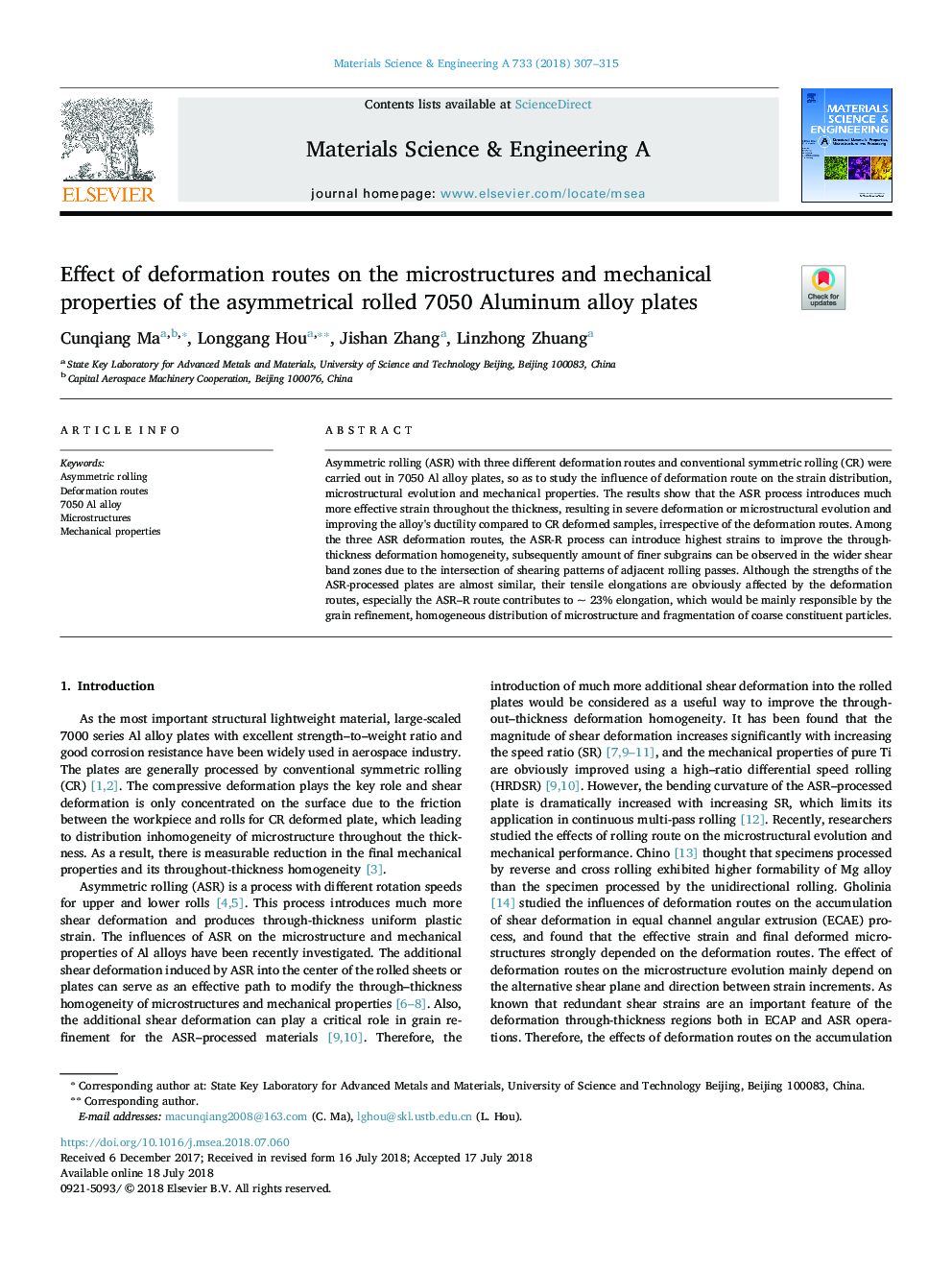| Article ID | Journal | Published Year | Pages | File Type |
|---|---|---|---|---|
| 7971652 | Materials Science and Engineering: A | 2018 | 9 Pages |
Abstract
Asymmetric rolling (ASR) with three different deformation routes and conventional symmetric rolling (CR) were carried out in 7050 Al alloy plates, so as to study the influence of deformation route on the strain distribution, microstructural evolution and mechanical properties. The results show that the ASR process introduces much more effective strain throughout the thickness, resulting in severe deformation or microstructural evolution and improving the alloy's ductility compared to CR deformed samples, irrespective of the deformation routes. Among the three ASR deformation routes, the ASR-R process can introduce highest strains to improve the through-thickness deformation homogeneity, subsequently amount of finer subgrains can be observed in the wider shear band zones due to the intersection of shearing patterns of adjacent rolling passes. Although the strengths of the ASR-processed plates are almost similar, their tensile elongations are obviously affected by the deformation routes, especially the ASR-R route contributes to ~ 23% elongation, which would be mainly responsible by the grain refinement, homogeneous distribution of microstructure and fragmentation of coarse constituent particles.
Related Topics
Physical Sciences and Engineering
Materials Science
Materials Science (General)
Authors
Cunqiang Ma, Longgang Hou, Jishan Zhang, Linzhong Zhuang,
